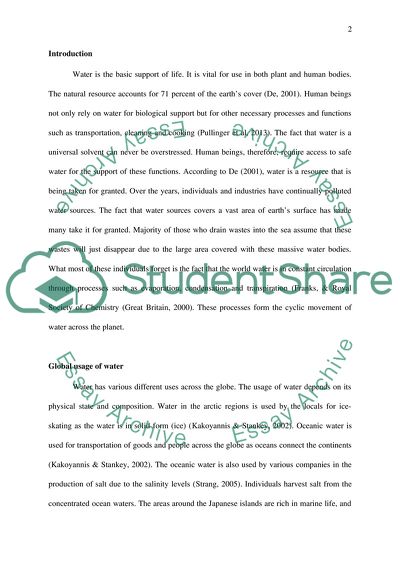Cite this document
(Global Usage of Water Essay Example | Topics and Well Written Essays - 3000 words, n.d.)
Global Usage of Water Essay Example | Topics and Well Written Essays - 3000 words. Retrieved from https://studentshare.org/environmental-studies/1809853-exploring-the-contexts-of-potentially-sustainable-living-case-study-water
Global Usage of Water Essay Example | Topics and Well Written Essays - 3000 words. Retrieved from https://studentshare.org/environmental-studies/1809853-exploring-the-contexts-of-potentially-sustainable-living-case-study-water
(Global Usage of Water Essay Example | Topics and Well Written Essays - 3000 Words)
Global Usage of Water Essay Example | Topics and Well Written Essays - 3000 Words. https://studentshare.org/environmental-studies/1809853-exploring-the-contexts-of-potentially-sustainable-living-case-study-water.
Global Usage of Water Essay Example | Topics and Well Written Essays - 3000 Words. https://studentshare.org/environmental-studies/1809853-exploring-the-contexts-of-potentially-sustainable-living-case-study-water.
“Global Usage of Water Essay Example | Topics and Well Written Essays - 3000 Words”, n.d. https://studentshare.org/environmental-studies/1809853-exploring-the-contexts-of-potentially-sustainable-living-case-study-water.


